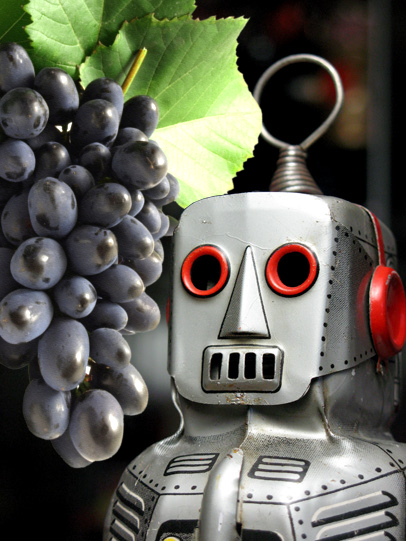Wine-loving robots help vineyards squeeze more
 Australian researchers have come up with a brilliant idea involving cars, robots and plenty of wine.
Australian researchers have come up with a brilliant idea involving cars, robots and plenty of wine.
UNSW researchers have equipped a vehicle with cameras and robotic technology to help Australian wine producers better predict the coming grape yield, in a bid to save the local industry as much as $200 million a year.
The car will drive itself along rows of grapes, collecting the information necessary to estimate yields earlier in the season, potentially before the vines even begin to bud.
Knowing the grape yield early is essential in planning how many wine barrels to buy or rent, tank space to allocate and the tonnage of grapes to be transported.
It is a big step up from the current method, where the farmer or viticulturist must manually sample grapes at various stages of growth and use past knowledge to predict future production.
Dr Mark Whitty, a mechatronics lecturer at UNSW, is leading one of three teams that will try three different techniques to improve grape yield estimates.
A low-budget prototype is already being tested at Jarretts of Orange - a cool-climate winery on the slopes of Mt Canobolas in central NSW.
The rig consists of GoPro cameras mounted to the side of a car, which is driven through the rows of vines.
“We've found it gives good results for the majority of situations we have so far, and it is very much a budget solution that is easily applicable to farmers.”
A more expensive prototype will be built and tested later this year, thanks to funding from the Australian Grape and Wine Authority (AGWA) and the NSW Department of Primary Industries.
Outside of the AGWA-funded project, an undergraduate thesis student, Samuel Marden, has been testing a mobile robot for automated image capture.
Image data captured by all three systems is expected to shed light on vine parameters, such as berry diameter and bunch size, and be capable of weighing grape bunches and measure picked volumes.
“Our intention is to drive through the vineyard and observe as much as we can of what's on the vines at different stages of maturity, and then use that to try and correlate what the yield is actually going to be,” Dr Whitty said.
NSW Department of Primary Industries’ viticulture research leader, Greg Dunn, predicted that, if successful, technology systems such as those proposed by UNSW could save Australia’s wine industry between $100 million and $200 million a year.
“We need to raise the yield estimation for grapes to a significantly better figure than it is now,” Dunn said.
NSW DPI is also overseeing a concurrent project by Macquarie University researchers, which is similarly aimed at improving yield estimations.
Dr Whitty said the two projects will share data and data analysis skills.







 Print
Print